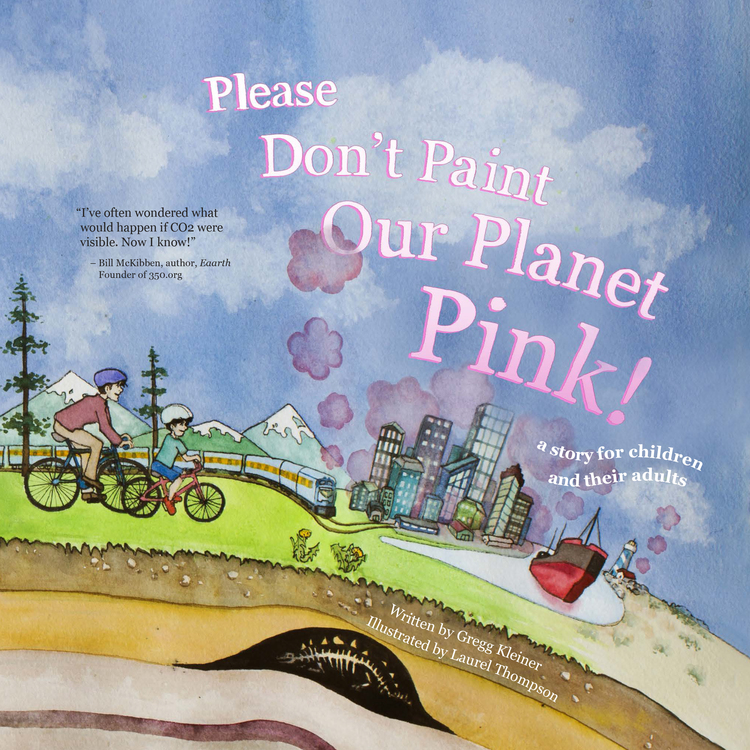"If only you could see carbon dioxide," is the sigh often heard from climate activists. If carbon dioxide were not an odourless invisible gas, we would have started to curtail its emissions long ago. It is unfortunate that something so dangerous goes undetected by our human senses.
But what if you could see carbon dioxide? What if it had a colour, say pink, and you can watch pink clouds billowing out of factory stacks, chimneys and tail pipes? Gregg Kleiner has imagined just such a world in his children's book "Please don't paint our planet pink", that visualises the problem and - pardon the pun - paints a solution. (Book review by ClimateMama here).
Laurel Thompson's illustrations for this book may seem whimsical, but they are in fact close to reality. Compare them to footage from the makers of the movie "Racing Extinction" (out in 2015), who have enabled their cameras to "see" carbon dioxide by putting the right filter in front of the lens. Here is a taste of what that looks like:
(2 mins) via Upworthy
In this video footage, the carbon dioxide appears as white clouds coming out of smoke stacks and tail pipes, and breathed out by people. As the producers say, it's scary to see how it's everywhere, since everything we do involves burning fossil fuels.
And, zooming out from the breath of a single human, an ultra-high resolution computer model from NASA shows the carbon dioxide produced on the surface of the earth and subsequently dispersed throughout the atmosphere by the various air streams of the global weather patterns.
It compresses one calendar year into a mesmerizing 3-minute watch: you can see the plants come into leaf, then re-releasing their carbon throughout the seasons. Very high concentrations of CO2 are visible as enormous red plumes covering industrial areas in the United States, Europe and South China.
NASA | A Year in the Life of Earth's CO2
But unfortunately, in too many places on earth you don't need a lively imagination, special filters or satellite data crunched by supercomputers to see the carbon dioxide. In regions where coal and high-sulfur diesel are the main sources of energy, all you have to do is look at the nearest smoke stack of the tail pipe of a passing truck: Their carbon dioxide emission is marked by the small particles that are also in the exhaust stream.
While factory stacks can be taken as signs of progress in developing countries, their particulate pollution also brings smog, lung health issues, and shortened life spans. It is no wonder that pressure is mounting in China to move their economy to cleaner sources of energy. And it is quite possible that India will follow that same path, for the same reason: you can cut down on carbon pollution and significantly improve public health at the same time.
And that would be a real gain, not a whimsical children's tale.
You may also like:
1. Stop the Smog: use cleaner coal and diesel.
2. What's so clean about diesel (in the US)?
3. Just how bad is diesel exhaust?


No comments:
Post a Comment
You have an opinion: Let's hear it.
(Comments are moderated; please be patient).